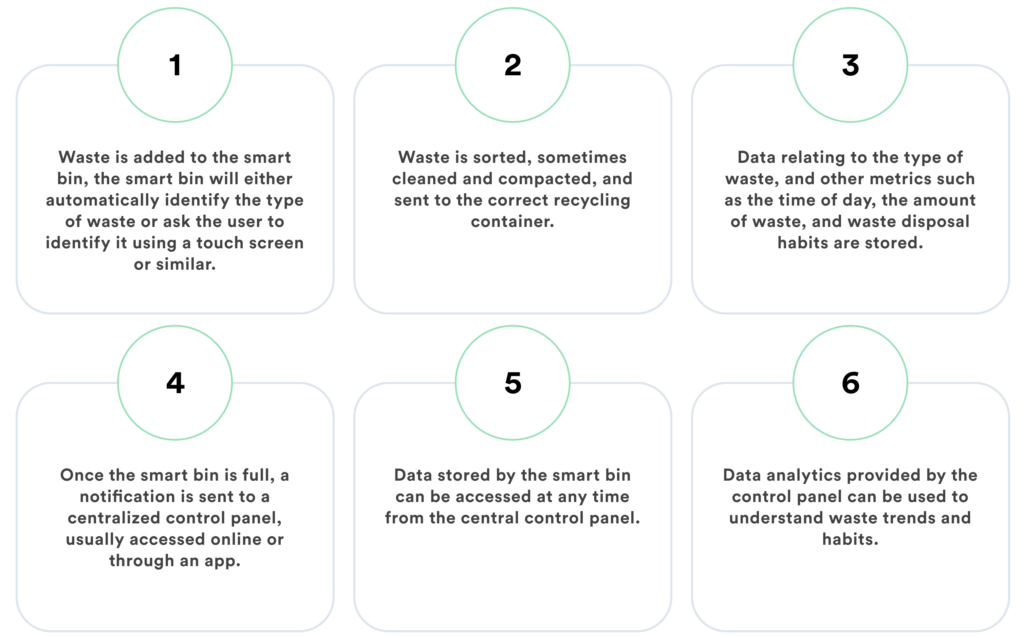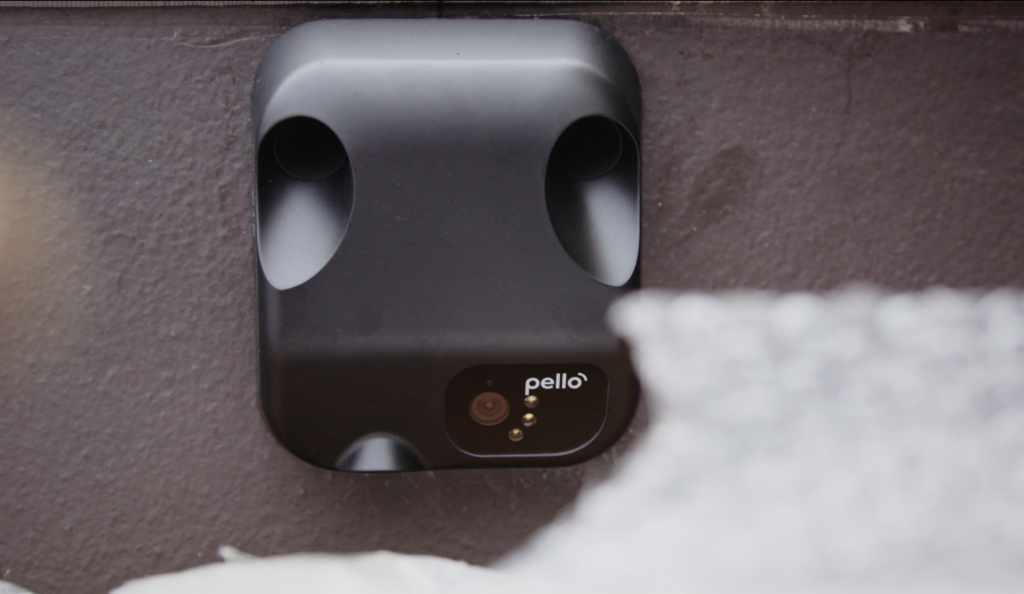The rise of the smart city has seen numerous innovations over the past decade, with a range of advanced technologies being introduced to improve and streamline city infrastructure. Spanning many different systems, including energy, transportation, and internet connectivity to name a few, they aim to make urban areas more accessible to everyone that inhabits them. With global waste projected to increase by 69% before 2050 and a growing commitment from over 80% of businesses towards environmental sustainability, the need for improved waste and recycling management is more pressing than ever to achieve zero waste goals.
Smart cities like New York, Barcelona, and London, in tandem with Internet of Things (IoT) technologies, are leading the way in promoting more efficient urban living. Among the various sectors benefiting from these technologies, smart waste management is emerging as a crucial element in enhancing the livability and sustainability of municipalities around the world.
The journey from the generation and collection of waste to its diversion and processing is becoming more efficient, thanks in part to the introduction of smart recycling bins. These bins represent a significant step in cleaning up urban landscapes and streamlining waste management systems. Innovations in this sector, including AI-powered solutions like Pello, are transforming operational costs and waste management benchmarks, offering deeper insights into the lifecycle of waste. As we explore what smart garbage bins are and how they function, it’s clear that such technologies are pivotal in shaping the future of sustainable urban living. But what exactly are smart garbage bins and how do they work? Read on to learn the answer to these questions and more.
What Is a Smart Recycling Bin?
A smart recycling bin is an innovative and technologically advanced version of a traditional waste bin, with the ultimate aim of sending less waste to landfill. It is equipped with various sensors, connectivity features, and data analytics capabilities to improve waste management and recycling efforts. They are designed to make the waste collection and recycling process more efficient, convenient, and sustainable for both businesses and consumers.
In addition to sensors and data capture features, a smart recycling bin may also include auto sorting technologies and a compactor. Often, these features are supported by AI technologies that can efficiently identify waste types and send them to the right containers. Once the containers are full, the smart bin can be emptied, and waste streams easily diverted to the correct recycling facility.
How Do Smart Waste Bins Work?
Today, there is a range of different smart bins available, each with a different set of features that enhance functionality over that of a conventional trash can. However, broadly speaking, most smart bins work in the same way.

Features of A Smart Recycling Bin
While different smart bins offer different features, there is a core set of elements that turns a conventional trash can into a smart bin. Below we cover these core features in more detail.
Sensors
Smart bins are equipped with sensors that can detect the fill level of the bin. This information is often transmitted wirelessly over WiFI or Bluetooth, allowing waste management teams to optimize collection routes and reduce unnecessary pickups. Cameras and other sensors may also detect the type of waste being placed in the bin.
Connectivity
Smart bins are connected to the Internet of Things (IoT), enabling real-time communication between the bins, waste management teams, and central control systems. This connectivity also allows data collection and analysis.
Data Analytics
The data collected from the smart bins, such as fill levels, types of waste, and location, can be analyzed to identify patterns and trends. This information can help in making informed decisions about waste collection schedules, recycling campaigns, and resource allocation.
Notifications
Some smart bins can send notifications to waste management teams when they are nearing full capacity. This helps optimize collection routes and prevents overflow, reducing environmental impact.
Benefits of Smart Waste Bin Technology
Smart waste bins offer a huge range of benefits over conventional waste management solutions, ensuring that more waste is sorted before it reaches recycling facilities. Some of the benefits include:
Efficient Waste Collection
Traditional waste collection methods often involve fixed schedules or routes, which can lead to unnecessary trips and wasted resources. Smart bins, equipped with fill-level sensors and IoT connectivity have the potential to disrupt this approach to waste management by continuously monitoring fill levels and transmitting real-time data to waste management operators.
This data provides insights into the rate of waste accumulation, enabling operators to create dynamic collection routes. Instead of collecting from bins on predetermined schedules, waste management teams can now prioritize bins that are nearing full capacity. By doing so, they reduce the number of collection trips and minimize the carbon emissions associated with fuel consumption.
Data-Driven Insights
The data collected by smart waste bins goes beyond just optimizing collection routes, offering a rich vein of information for improved waste management strategies and enabling evidence-based decision-making. By analyzing the patterns and trends in waste generation and disposal, waste management teams gain valuable insights into the behaviors of communities and individuals.
For instance, data might reveal peak waste generation times, allowing for better resource allocation during these periods. Moreover, understanding the types of waste being disposed of most frequently can guide the development of targeted recycling campaigns. By tailoring educational initiatives to address prevalent waste disposal habits, recycling efforts become more effective and impactful.
Behavioral Change
One of the most interesting impacts of smart waste bins is their ability to influence individual behavior. Through real-time feedback mechanisms, these bins encourage people to be more conscious of their waste disposal habits, and when users see that their actions directly impact the fill levels of bins and the efficiency of waste collection, they are more likely to adopt responsible waste disposal practices.
This behavioral shift extends beyond just using the smart bins correctly, and it can inspire a broader shift towards sustainability in daily life. As users become accustomed to this type of feedback loop, they may start to consider waste reduction and recycling in other aspects of their routines.
Cost Savings
Optimized collection routes mean fewer trips, reduced labor, and lower fuel expenses, meaning cost savings for any waste management team or company. In addition, by preventing overflow and littering, additional costs associated with cleanup and maintenance can be reduced.
These cost savings align with broader sustainability goals, with efficient resource utilization reducing the waste management industry’s environmental footprint, making it more sustainable and responsible.
Smart Bins – Looking to the Future
While smart bins are already packed with the latest tech, advancing technologies look set to push the concept further. In the future, more smart bins are likely to be fitted with AI operating systems, allowing the device to actively learn, and subsequently cleaning, sorting, and crushing all types of waste more efficiently. In addition, improved data analytics will allow a better understanding of waste generation, allowing both businesses and consumers to identify ways to reduce and eliminate unnecessary waste.
However, while these elements may be seen as the next mainstream features, as smart cities continue to develop it is hoped that innovation will keep pace, and as smart trash bins continue to improve recycling rates, they may get even smarter!

